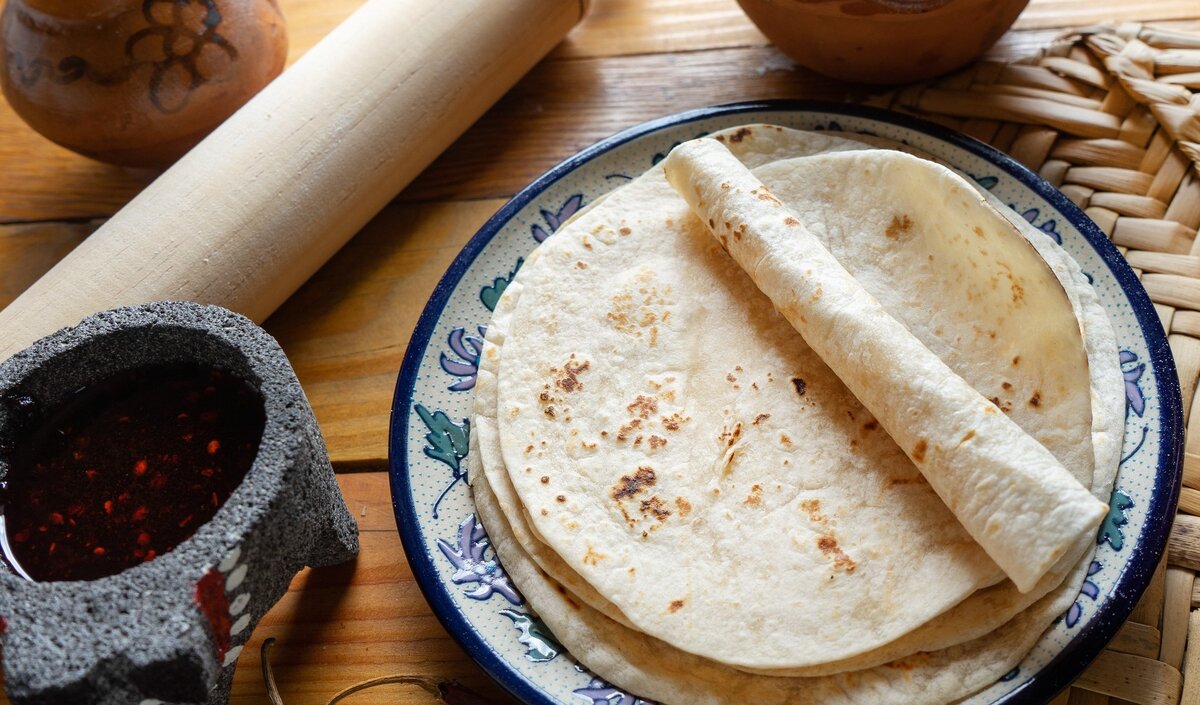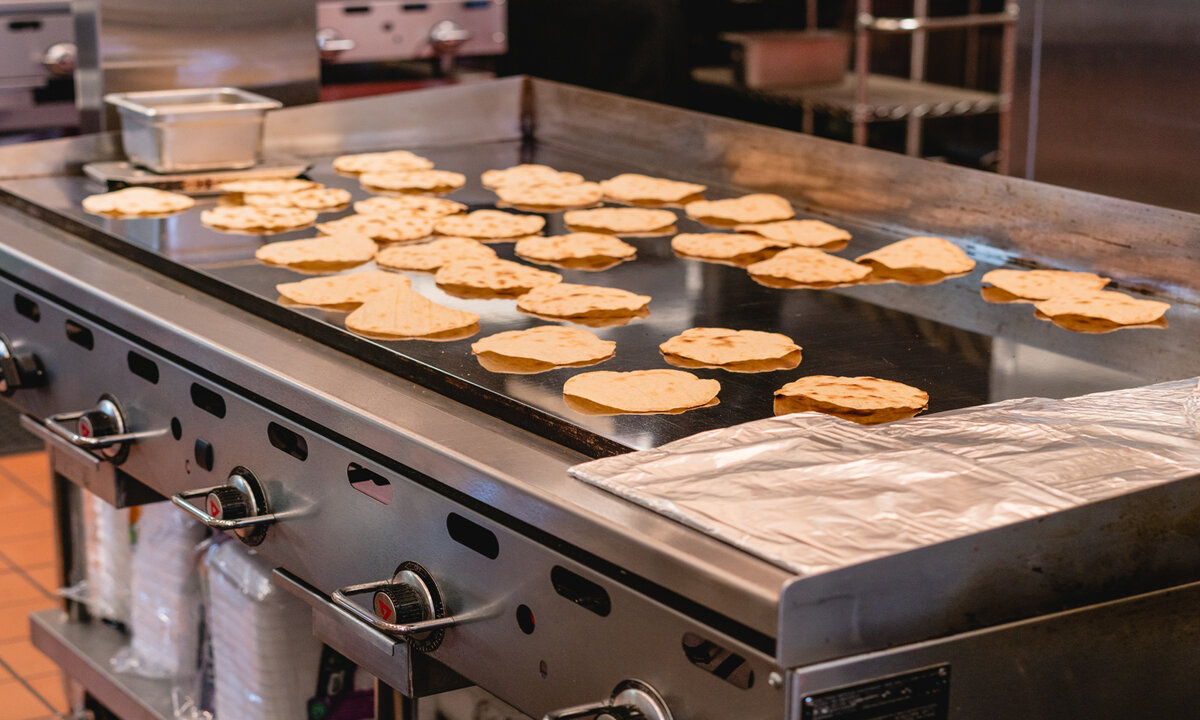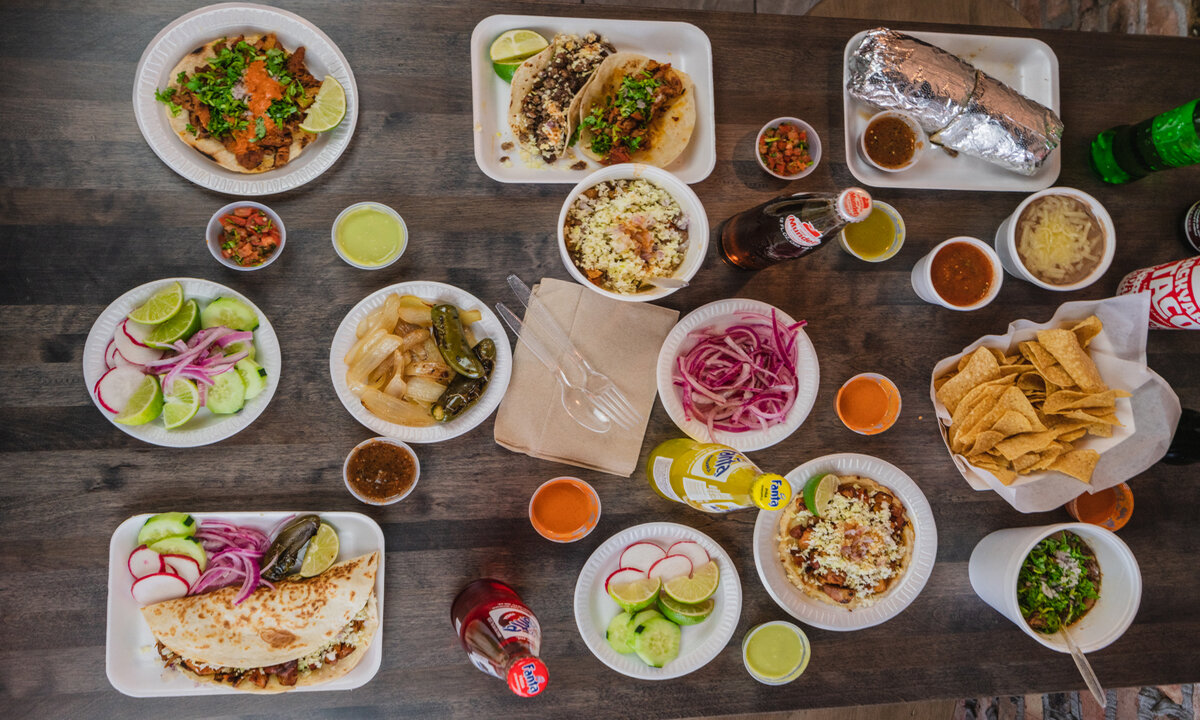 Photo from Getty images
Photo from Getty images
Originally Posted On: https://backyardtaco.com/blog/corn-v-flour-tortillas/
Even if you regularly enjoy Mexican food, from tacos to burritos and beyond, you might have considered; are flour and corn tortillas really all that different? And if so, do those differences really impact the experience of the person enjoying the tortilla?
 Or, perhaps you’re a tortilla connoisseur and wonder why one would choose a flour tortilla over a corn option for the best taste.
Or, perhaps you’re a tortilla connoisseur and wonder why one would choose a flour tortilla over a corn option for the best taste.
When it comes to Mexican cuisine, tortillas are a long-standing staple. They’re also a highly versatile option, and can be used to create a variety of different dishes, including tacos, burritos, and tostadas — but the list goes on much further than that. And, even though they are so commonly used, everyone has their preference when it comes to corn vs. flour.
Here at Backyard Taco, we allow our customers to choose between a corn and flour tortilla when ordering our street tacos. Not sure which you prefer? Here’s a quick guide to corn versus flour tortillas, as well as some dishes each option pairs best with.
WHAT IS THE DIFFERENCE BETWEEN FLOUR AND CORN TORTILLAS?
If you ask anyone with an interest in Mexican cuisine, they will surely tell you that corn and flour tortillas have some pretty key differences, and your choice can have a substantial effect on the dish you’re preparing.
Corn tortillas and flour tortillas are the two most popular variations. In general, tortillas aren’t a food item that’s new or simply trendy — instead, tortillas have been an integral part of Mexican cuisine for a long, long time. We’re talking hundreds, if not thousands, of years. It’s fair to say that tortillas are far more than a Tex-Mex fad.
So, what does it take for a food item to qualify as a tortilla? Well, it’s actually pretty simple. At its core, a tortilla is a thin flatbread, whether you prepare it from corn or flour. The obvious difference between these two varieties is the primary ingredient, which leads to a considerably different product.
CORN TORTILLAS
 Photo from Getty Images
Photo from Getty Images
Corn tortillas have been around for much longer than their flour counterparts. So, if you are looking to prepare a Mexican dish that’s as authentic as possible, corn tortillas are generally the way to go. This is also due to the fact that corn is a staple ingredient within Mexican cuisine, which has been the case for thousands of years.
The popularity of corn tortillas spans across both Mexico and Central America, as well as in much of the United States.
Corn tortillas are less sturdy than flour tortillas, on top of having a different appearance. While flour tortillas are usually white, a typical corn tortilla is closer to a yellowish color. Also, corn tortillas are usually smaller than flour tortillas. The primary reason behind this is that when you prepare a larger corn tortilla, it is at a greater risk of falling apart. So, in order to keep them sturdy enough to withhold a variety of traditional fillings, they need to stay on the more compact side.
Are you interested in preparing your own corn tortillas? Well, surprisingly, the traditional ingredients aren’t always simple to get a hold of in the United States. Sure, corn is easy to come across, but that’s not going to get you the ideal, most authentic corn tortilla.
Instead, you will need to use masa harina to prepare your own corn tortillas. In some parts of the U.S., this ingredient could be more of a challenge to get a hold of. Basically, masa harina is the product of mixing finely ground corn flour with lime. Important to note is that when we say “lime,” we’re not talking about the common citrus fruit. Rather, the lime contained within masa harina is actually calcium hydroxide.
Alright, so, maybe it seems strange to mix calcium hydroxide with your corn. That’s understandable, especially if you’re unfamiliar with this aspect of Mexican cuisine. However, this is an important addition, if you want the most authentic corn tortilla. Whenever you mix lime with corn flour, you will trigger a process known as nixtamalization. Impressively enough, this process actually leads to a more nutritious tortilla, thanks to the release of essential vitamins, such as B vitamins.
Long before the flour tortilla was created, nixtamalization was a common process within Central American cuisine.
FLOUR TORTILLAS
 Photo from Getty Images
Photo from Getty Images
Speaking of flour tortillas — like we have already mentioned, this variety of tortilla has been around for considerably less time than corn tortillas. It is important to remember that wheat wasn’t always an ingredient within Mexican and Central American cuisine. In fact, it was actually introduced to the region by the Spanish. Before that point in time, the creation of the flour tortilla in the Americas wouldn’t have been possible.
Nonetheless, wheat was a popular European crop at the time, and was commonly grown in Spain. So, the Spanish were responsible for bringing it to the Americas.
Flour tortillas are at their highest popularity in North Mexico and the United States, rather than in Central America. Flour tortillas have also become a staple of Tex-Mex fare, rather than an item crucial to tradition Mexican or Central American food preparation. (Remember, even if they’re both delicious, Mexican and Tex-Mex cuisines aren’t the same thing.)
Because flour tortillas are naturally sturdier when compared to corn tortillas, it is simple to make them larger. So, while corn tortillas tend to be small and more fragile, flour tortillas play the opposite role. If you are ever in need of a strong tortilla to hold onto all your burrito fillings (without bursting all over your lap), then a flour tortilla is generally the safest way to go.
Unlike corn tortillas, flour tortillas are simple to prepare at home, without the need for hard-to-find ingredients. All you’ll need is a good tortilla press, as well as wheat flour and water. It’s actually an incredibly simple preparation process. Just mix the wheat flour with water, before adding a pinch of salt and kneading the mixture into a dough. Use the tortilla press to press this dough into your very own homemade tortillas.
WHICH TORTILLAS ARE THE HEALTHIEST?
It is pretty widely accepted that corn tortillas are the more nutritious option, compared to flour tortillas. This is for a number of reasons, including the higher vitamin content — which is due in part to the traditional nixtamalization process, as we mentioned earlier.
Still, that’s not where the health differences end. Corn tortillas are also lower in carbs, as well as higher in fiber. Plus, the carbs within a corn tortilla are the result of a whole grain, making them more nutritious. When you create a tortilla from wheat flour, you are typically going to use white flour to get the job done. Whenever a grain is processed in this way, it loses much of its nutritional value. Corn doesn’t require this level of processing.
However, whole wheat tortillas are growing more and more popular, over time. This is a healthier flour tortilla variety, as it is actually a whole-grain product. This adds a boost in nutritional value, including higher fiber content. So, if you’re a fan of flour tortillas but are looking to eat healthier, a whole wheat tortilla could be the way to go.
Corn tortillas are a more celiac-friendly option, on another hand. Corn is gluten free, which isn’t the case for wheat flour (whole grain or otherwise).
WHAT IS THE BEST TORTILLA FOR TACOS?
 As we have discussed, flour tortillas are a far sturdier option, and are often larger than traditional corn tortillas. But how does this affect their compatibility with tacos? Which is the better option, if there is one?
As we have discussed, flour tortillas are a far sturdier option, and are often larger than traditional corn tortillas. But how does this affect their compatibility with tacos? Which is the better option, if there is one?
Well, at the end of the day, it really depends on the taco. Particular Mexican cuisine items, such as burritos, really only work with one option — in this case, it’s most definitely flour tortillas. Burritos are generally on the larger side, and are often stuffed with large quantities of ingredients. As a result, a corn tortilla just isn’t going to hold up like you were hoping for.
Tacos are a bit of a different story. With tacos, there is an added level of versatility. If you’re trying to create simple, authentic tacos, then corn tortillas are most definitely the way to go. Even the flavor profile provided by a good corn tortilla can help to complement traditional ingredients. If you ever dine at a restaurant serving traditional Mexican or Central American fare, it is almost certain that you’ll receive tacos made from corn, rather than flour.
Still, that isn’t to say that you can’t make a delicious taco from a flour tortilla — because you truly can. Especially if you’re preparing a larger taco, a flour tortilla might be necessary, in order for your concoction to hold up. Flour tortillas are also the preferred option when it comes to Tex-Mex cuisine.
PICK UP AUTHENTIC MEXICAN FOOD AT BACKYARD TACO
 At Backyard Taco, we allow customers to choose between a corn tortilla and a flour tortilla, whenever they’re crafting their ideal street taco. With authentic Mexican mesquite grilled flavors, just pick your favorite meat and top it with your veggies and salsa, you can’t go wrong!
At Backyard Taco, we allow customers to choose between a corn tortilla and a flour tortilla, whenever they’re crafting their ideal street taco. With authentic Mexican mesquite grilled flavors, just pick your favorite meat and top it with your veggies and salsa, you can’t go wrong!
Or, make yourself a combo meal and try a taco with a corn tortilla and a quesadilla on a flour one.
Now that we’ve armed you with some strong background knowledge, this decision should be easier than ever to make, depending on your unique tastes and preferences. If not, why not try one of each? Who knows, you might just find a new Backyard Taco menu favorite!













